History in Pieces
- Presidential Approval Ratings
- Nuclear Weapons
- Opinion Polls
- NSC Meetings
- Miscellaneous
- White House Tapes
- About & Disclosure

Australian America’s Cup Yacht Buzzed by the US Navy during the Cuban Missile Crisis
by David Coleman
The 1962 America’s Cup was held just a month before the Cuban missile crisis at Newport, Rhode Island. The Australian challenger yacht Gretel went up against the yacht from the New York Yacht Club, the Weatherly . Gretel was the first Australian challenger, the first America’s Cup challenger from a country other than Britain or Canada, and the first from the southern hemisphere. It was owned by a syndicate headed by media magnate Sir Frank Packer ( Kerry Packer ‘s father and James Packer ‘s grandfather).
Sir David Ormsby-Gore (Lord Harlech)
I know that all of us take the greatest pleasure in being here, first of all because whether we’re Australian or American, we are all joined by a common interest, a common devotion and love for the sea. And I am particularly glad to be here because this Cup is being challenged by our friends from Australia, this extraordinary group of men and women numbering some 10 million, who have demonstrated on many occasions, on many fields, in many countries, that they are the most extraordinary athletic group in the world today, and that this extraordinary demonstration of physical vigor and skill has come not by the dictates of the State, because the Australians are among the freest citizens in the world, but because of their choice. Therefore, Ambassador, you are most welcome here. This Cup has been challenged in the past by our friends from Great Britain. We are glad to see Australia assuming the responsibilities of empire in coming here, and we’re particularly glad to welcome you in the year 1962. This is a trophy which the United States has held for over a century, unlike the Davis Cup. And we do have a feeling, Ambassador, we do have an old American motto of “One cup at a time.” There is no question that this kind of national competition produces the greatest good will among nations. The most recent indication of that, of course, were the games held at Indonesia which produced a wonderful feeling of spirit in all of Asia, and I am confident that these games will produce the same kind of good will between Australia and the United States. 2 I really don’t know why it is that all of us are so committed to the sea, except I think it’s because in addition to the fact that the sea changes, and the light changes, and ships change, it’s because we all came from the sea. And it is an interesting biological fact that all of us have, in our veins the exact same percentage of salt in our blood that exists in the ocean, and, therefore, we have salt in our blood, in our sweat, in our tears. We are tied to the ocean. And when we go back to the sea–whether it is to sail or to watch it–we are going back from whence we came. Therefore, it’s quite natural that the United States and Australia, separated by an ocean, but particularly those of us who regard the ocean as a friend, bound by an ocean, should be meeting today in Newport to begin this great sea competition. This is an old relationship between the United States and Australia, and particularly between Rhode Island and Australia. In the 1790’s, Ambassador, American ships, mostly from Rhode Island, began to call regularly at New South Wales. Their cargoes, I regret to say, consisted mainly of gin and rum, and the effect was to set back the athletic development, until the recent great temperance movement in Australia, for many years. In 1801, Governor Philip Gidley King of Australia complained to London, “Such has been the certainty in America of any quantity of spirits being purchased here that a ship cleared out of Rhode Island for this port with a very large investment of spirits, which I positively forbade being landed, in consequence of which she left this port with upward of 13,000 gallons of spirit brought to Australia for sale.” And he told the American Minister Rufus King to warn the Rhode Island merchants not to try to market their rum in Australia. I need hardly say that the Rhode Island merchants continued to do their compassionate best to quench this thirst which was felt so strongly in Australia. However, Australia became committed to physical fitness and it’s been disastrous for the rest of us. We have the highest regard for Australia and we, as you said, Ambassador, regard them as very satisfactory friends in peace and the best of friends in war. And I know that there’re a good many Americans of my generation who have the greatest possible reason to be grateful to the Australians who wrote a most distinguished record all the way from the desert of North Africa, and most particularly in the islands of the South Pacific, where their particular courage and gallantry I think met the strongest response in all of us in this country. But I don’t really look to the past. I look to the present. The United States and Australia are most intimately bound together today, and I think that–and I speak as one who has had some experience in friendship and some experience in those who are not our friends–that we value very much the fact that on the other side of the Pacific the Australians inhabit a very key and crucial area, and that the United States is most intimately associated with them. So beyond this race, beyond the result, rests this happy relationship between two great people. I want to toast tonight the crew, the sailors, those who made it possible for the Gretel to come here, those who have, for a hundred years, defended this Cup from the New York Yacht Club, to all of them. As the Ambassador said so well, they race against each other, but they also race with each other against the wind and the sea.
The next day, JFK and Jackie Kennedy boarded the Destroyer USS Joseph P. Kennedy Jr. (named after his elder brother who had been killed in World War II) to watch the first race from the ship’s deck in the sunshine. The Weatherly won.

JFK and Jackie Kennedy watch the first race in the 1962 America’s Cup from aboard the USS Joseph P. Kennedy Jr., off Newport, Rhode Island. Photograph by Robert Knudsen, White House, in the John F. Kennedy Presidential Library and Museum, Boston. 15 September 1962 / KN-C23943
Three days later, Gretel fought back to level the series 1-1. It ended up being the only race of the series that Gretel won. Weatherly won the following three races, securing the cup yet again for the United States on September 24, 4 wins to 1.
“[W]e have salt in our blood, in our sweat, in our tears. We are tied to the ocean. And when we go back to the sea–whether it is to sail or to watch it–we are going back from whence we came.” Getting Gretel home to the Royal Sydney Yacht Club wasn’t a case of simply setting sail off into the wild blue yonder. 12-meter yachts are designed for inshore match racing, not ocean crossings. So to get it home half-way around the world they had to load it on a freighter and ship it back.
But it wasn’t all smooth sailing. As they headed south they found the U.S. Navy paying special attention to freighters heading into the Caribbean. The freighter, the Port Wyndham , had set sail from New York on October 23. That same day, on President Kennedy’s order, the U.S. Navy instituted a blockade line to stop ships going to Cuba . It was the darkest period of the Cuban missile crisis , and along with every other freighter in Caribbean waters during the period, the ship carrying the Gretel came in for special attention from the U.S. military.
The Port Wyndham , carrying the Gretel , did not make it back to Sydney until mid-December. When they finally arrived, the crew told reporters of their brush with the Cuban missile crisis half-way around the world. As the Associated Press report put it in a December 19 report:
The crew of the freighter Port Wyndham, which brought the Australian yacht Gretel home from the America’s Cup competition, reported today they were buzzed repeatedly near Cuban waters by U.S. military aircraft. The freighter sailed from New York on October 23 and passed through the Caribbean during the Cuban crisis. 3
- “Remarks in Newport at the Australian Ambassador’s Dinner for the America’s Cup Crews,” 14 September 1962, Public Papers of the Presidents: John F. Kennedy: 1962 (Washington, DC: Government Printing Office, 1963), doc. 383. ↩
- The 4th Asian Games were held from August 24, 1962 to September 4, 1962 in Jakarta, Indonesia. ↩
- Associated Press, “Yacht Carrier Buzzed Off Cuba,” Washington Post , 12 December 1962. ↩
About David Coleman
Follow at Medium . Read More »
- Classic Driver
- Forgot password
- Newsletters
- Language English Deutsch
- Currency Select AUD CHF CNY DKK EUR GBP HKD INR JPY NZD SEK SGD USD
- Collectibles
- Real Estate
- CD Works Agency
- For sale CD Shop Magazine Auctions Sell
Error message
Newest articles.
Closed for the Winter Season | Donate to the Museum

COME EXPLORE
America's cup hall of fame.
The America's Cup Hall of Fame honors individuals who have made outstanding contributions to yachting's most distinguished competition.
The Hall of Fame was founded in 1992 under the auspices of the Herreshoff Marine Museum by Halsey Herreshoff, a four-time America's Cup defender and grandson of legendary yacht designer Nathanael Herreshoff.
Over ninety legends of the Cup have been inducted into the Hall. Candidates eligible for consideration include members of the crew, designers, builders, syndicate leaders, supporters, chroniclers, and other individuals of merit. Each nominee is judged on the basis of outstanding ability, international recognition, character, performance, and contributions to the sport. The members of the Selection Committee are persons intimate with the history and traditions of America's Cup and committed to the integrity of the Hall of Fame.
The museum of the Hall of Fame is located on the grounds of the former Herreshoff Manufacturing Company of Bristol, Rhode Island, where yachts were built for eight consecutive America's Cup defenses between 1893 and 1934. Its collection include plaques honoring the inductees; half-hull models of challengers and defenders; artifacts including spars, steering wheels, and tank test model hulls; and special exhibits about the America's Cup.
America's Cup Hall of Fame Selection Committee
R. Steven Tsuchiya, Chairman
Margherita Bottini
John S. Burnham
Brad Butterworth
William Collier
William H. Dyer Jones
Richard Gladwell
Jack Griffin
Halsey Herreshoff
Tim Jeffery
Gary Jobson
Andrew Johns
Murray Jones
John Lammerts van Bueren
Ken McAlpine
Elizabeth Meyer
Shirley Robertson
Blue Robinson
Hamish Ross
Bruno Troublé
Tom Whidden
Explore the ACHoF
From Inductee bios, to past winners, and the latest Induction news
Click Here for a detailed record
of America's Cup Matches

These are the individuals whose character, performance, and contributions have earned them the honor of induction into the America's Cup Hall of Fame.
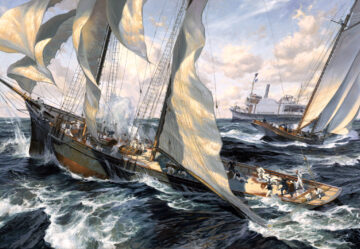
AMERICA'S CUP DATABASE
This database sponsored by the late Edward I. du Moulin contains comprehensive information on participants in all America's Cup races to date. (Photo by Russ Kramer)
HALL OF FAME NEWS
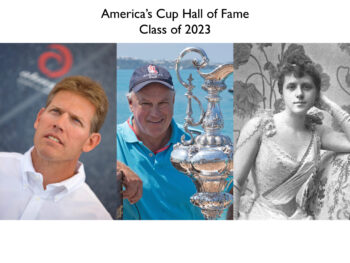
America’s Cup Hall of Fame Announces Class of 2023
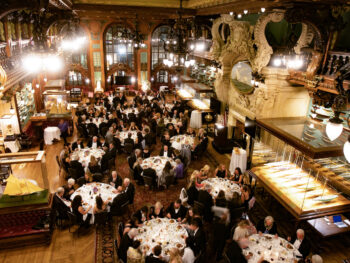
Recapping the 2022 America’s Cup Hall of Fame Induction Ceremony
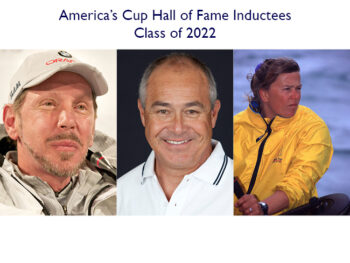
The America’s Cup Hall of Fame: Class of 2022 Inductees

HMM Congratulates The Sailing Museum on a Successful Launch
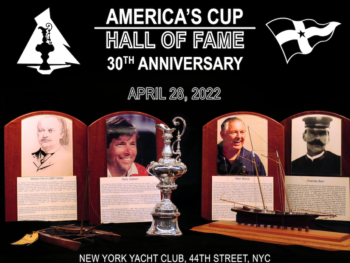
NYYC: America’s Cup Hall of Fame’s 30th Anniversary

Newport International Boat Show Announces Herreshoff as one of two Charitable Partners
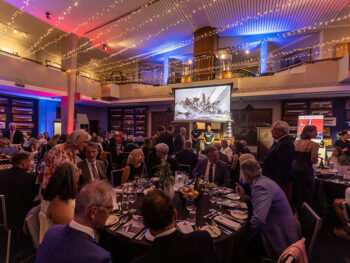
America’s Cup Induction Ceremony 2021: Ed Baird
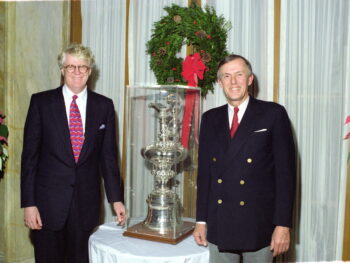
The Origin of the America’s Cup Hall of Fame
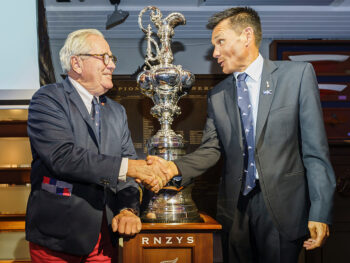
America’s Cup Hall of Fame Induction Ceremony 2021 Photo Album
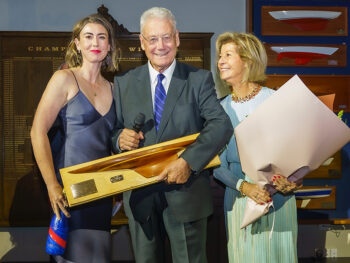
America’s Cup Induction Ceremony 2021: Peter Montgomery

Remembering Bob Fisher
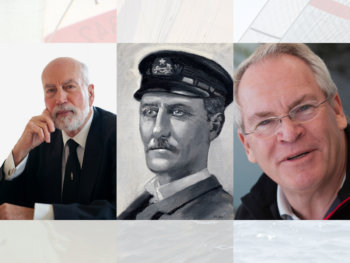
America’s Cup Hall of Fame 2020 Induction Ceremony Goes Virtual
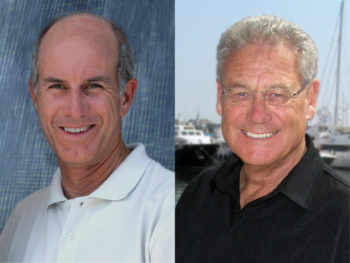
Peter Montgomery & Ed Baird to be Inducted to the America’s Cup Hall of Fame, 2021
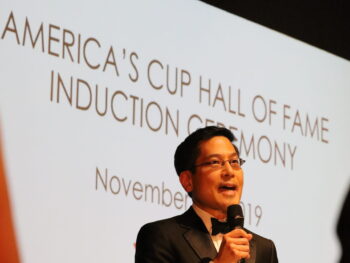
America’s Cup Induction Ceremony 2019 Photo Gallery
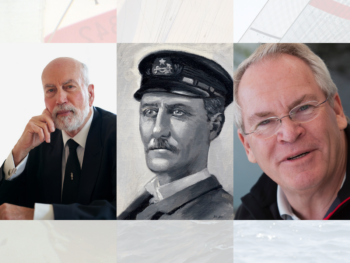
The America’s Cup Hall of Fame 2020 Inductees Announced

America’s Cup Hall of Fame to induct three personalities in 2017: John K. Marshall, Doug Peterson and Syd Fischer
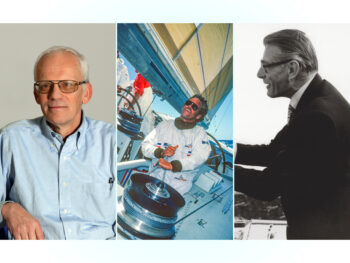
2019 America’s Cup Hall of Fame Induction
2018 America’s Cup Hall of Fame Induction
AMERICA'S CUP WINNERS
Note : The yacht AMERICA won the Royal Yacht Squadron ₤100 Cup on August 22nd, 1851. Her surviving owners presented the Cup to the New York Yacht Club in 1857 under the condition that it serves as a perpetual challenge prize for international yacht racing. The Cup was subsequently renamed after the first winning yacht, AMERICA.
Click Here for a detailed record of America's Cup Matches
THANKS TO OUR SPONSORS

Dynamic title for modals
Are you sure.
- Share full article
Advertisement
Supported by
U. S. YACHT WINS, RETAINS THE CUP; Weatherly Conquers Gretel of Australia by Half-Mile and Takes Series, 4-1 WEATHERLY WINS CUP YACHTING, 4-1
By John Rendel Special To the New York Times.
- Sept. 26, 1962
NEWPORT, R. I., Sept. 25--The United States retained the America's Cup today. In the fifth race of the 18th defense, Weatherly defeated Gretel of Australia by half a mile. View Full Article in Timesmachine »

12mR – GRETEL – Recreate of 1962 America´s Cupper
Preis auf Anfrage
- Description
- Additional information
Specification
General Information
Rigg and Sails
Construction
One outstanding classic yacht of America’s Cup fame is now available for restoration at Robbe & Berking Classics yard in Flensburg. The 12-m-R yacht GRETEL sailed as a challenger for the America’s Cup in 1962. It was the first ever Australian 12mR. GRETEL was designed by the yacht designer Alan Payne. Her hull was built of wood on steel frames.
The 12 metre designed by Alan Payne was full of new ideas. A groundbreaking innovation was the ability to connect the genoa winches to one another via a four-speed gearbox and to operate them with foot pedals. This increased the efficiency when turning immensely.
The first ever Australian 12 metre was launched on February 19, 1962, seven months before the America’s Cup races. Nine days later the yacht was christened GRETEL in memory of Frank Packer’s deceased wife. Already with the first test strokes against “Vim” it became clear that “Gretel” was very fast. At the end of May 1962, both ships were sent to the USA, where “Gretel” later fought a tough and worthy battle with the defender, “Weatherly”. The races were exciting and were only narrowly won. The Australians won one race. After the cup races of 1962, the fast “Gretel” served as a sparring partner for later teams; 1967 for the challenger “Dame Pattie” and later for “Gretel II”, Packer’s second challenge from 1970. “Gretel” last sailed in 1975 in the first “Southern Cross” team.
From 1973 to 1974 it belonged to “Yanchep Estates Pty. Ltd. ”with home ports in Perth and Yanchep. In 1975 the “Southern Cross America’s Cup Challenge Association, Ltd.” owned the yacht, from 1976 to 1979 it belonged again to the “Gretel Syndicate” and in 1980 it was removed from Lloyd’s Register. From 1982 to 1994 she worked as a charter yacht in the Whitsundays, later she was sold to Europe and sailed for many years in Italy. It was found here by the Robbe & Berking Classics shipyard and is now being transported to the shipyard in Flensburg for a basic restoration. “We want to restore the ship to its original condition from 1962,” said shipyard manager Oliver Berking. “This is a unique piece of yachting history and must be preserved!”
Related products
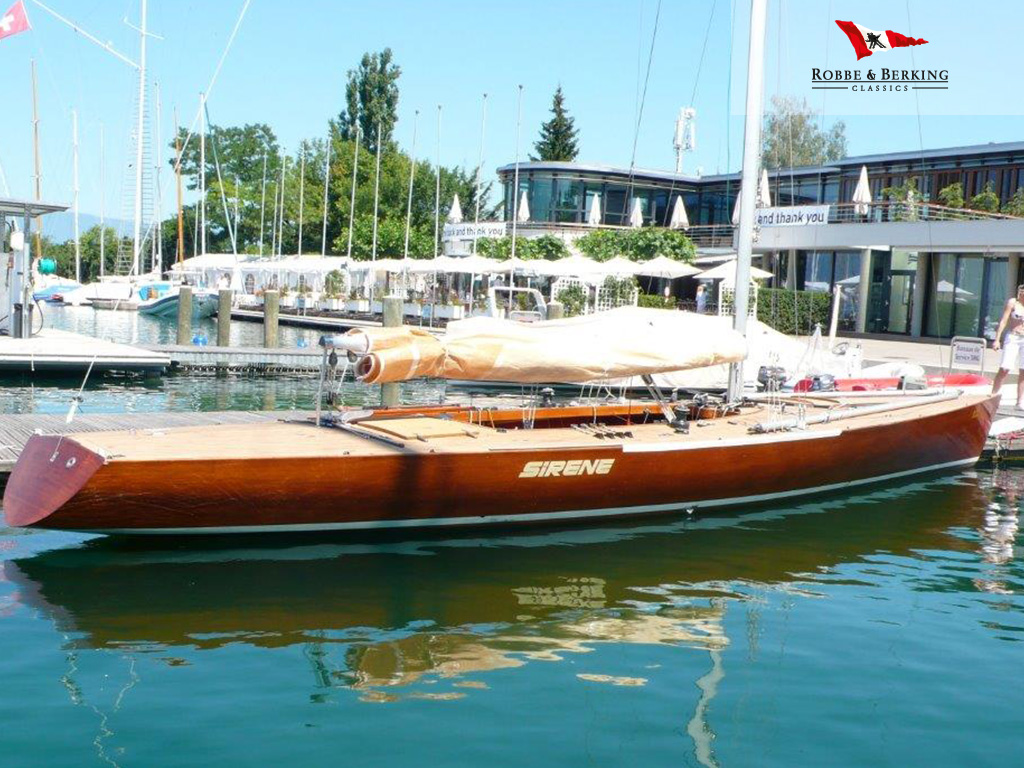
34′ Toucan Class Daysailer – SIRENE
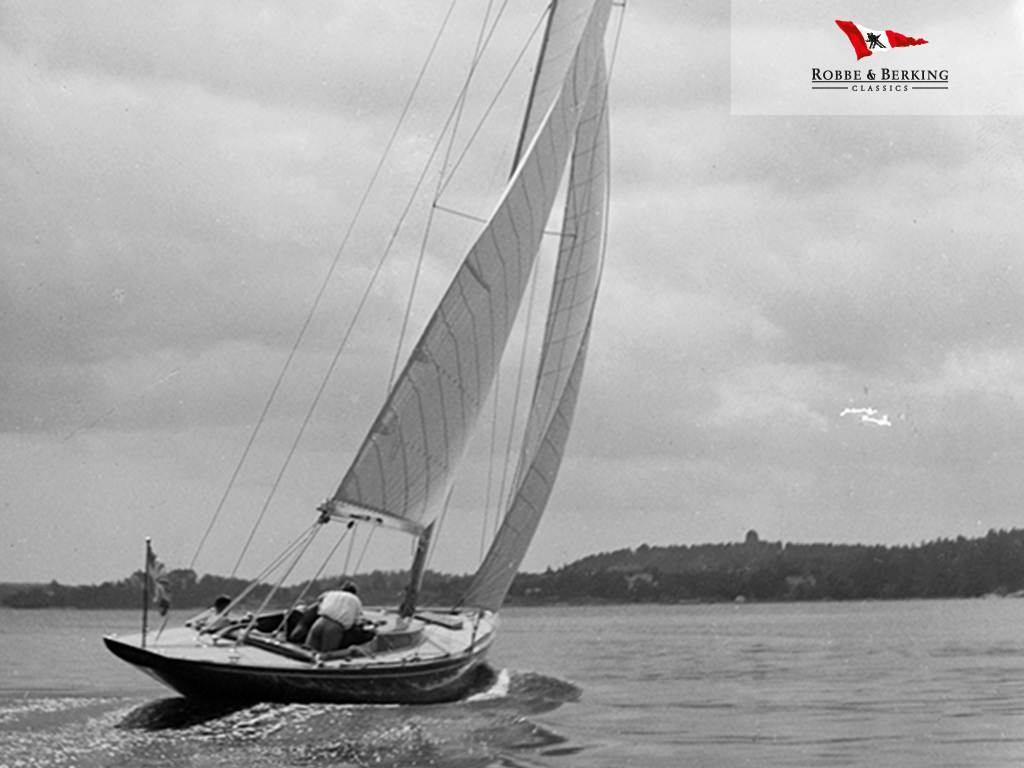
1944 Roy Sherman 8mR – GAIN
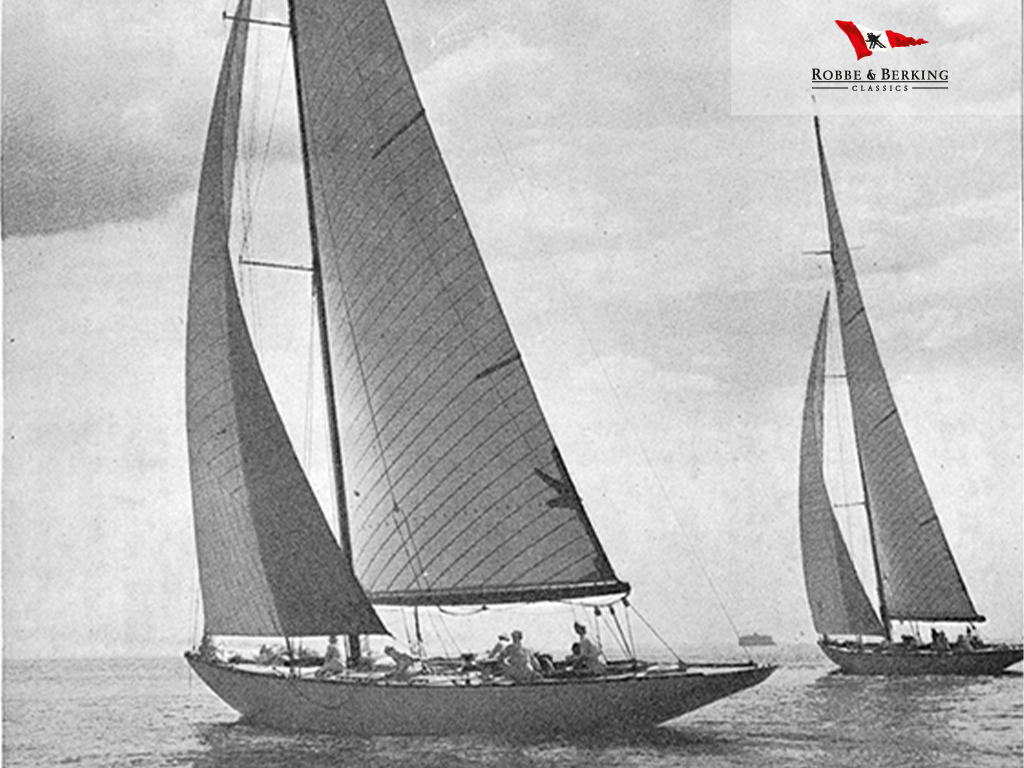
12mR – MARINA – A. Mylne – Recreate of Design No.368
ENTER THE AUSTRALIANS
The 1958 America’s Cup took the wind out of Britain’s sails in the competition. So comprehensive was the defeat of Sceptre by Columbia, and so wide reaching were the ramifications with regards design decisions and the resultant internal politics at the Royal Yacht Squadron, that participation going forward was in serious doubt. Concerted momentum had been lost in Britain but down under, in Australia, things were really starting to happen with the emergence of Sir Frank Packer in the sailing world. As one of the richest, and most high-profile entrepreneurs in the world, part of a new breed of media moguls, Packer’s dictatorial style was the marker of a no-nonsense campaign that was almost railroaded before it started by the British establishment.
The Royal Sydney Yacht Squadron was selected as the club through which Packer’s syndicate would challenge from and before any formal challenge was issued, the Australians chartered the 12-Metre ‘Vim’ from John Mathews for a period of four years to gain the valuable insight and the tank-testing data as a benchmark for a new challenger. As news of the impetus building in Australia filtered through the British yachting scene, Lord Craigmyle a recovering alcoholic who campaigned for the cause in later life, formed what was to become the ‘Red Duster’ syndicate, purchasing the aged 12-Metre ‘Norsaga’ as a trial horse. Flying the flag of the Royal Thames Yacht Club in Knightsbridge, London, Lord Craigmyle called on friends in high places, most notably His Royal Highness Prince Philip, the Duke of Edinburgh, to try and persuade the New York Yacht Club to defer the Australian challenge.
In the late 1950’s the accepted protocol of the America’s Cup as a ‘friendly competition between foreign nations,’ was unchallenged with no stipulation for the contest to be an Anglo-American regatta. That it had been so in all but the Match in 1876 when a challenge from the Royal Canadian Yacht Club was met, was of little concern to the New York Yacht Club who accepted the challenge from the Royal Sydney Yacht Squadron with dates set for late summer 1962. Commodore Hinman of the NYYC was instrumental in seeing off the usurping and somewhat chancing challenge of the ‘Red Duster’ syndicate that included such luminaries as Owen Aisher, but it was Sir Frank Packer who delivered the killer blow saying in a cabled telegram: “As you are aware His Royal Highness Prince Philip is Patron of the Royal Sydney Yacht Squadron so no doubt our challenge will carry his blessing.” He was and he did. The British aimed for a ‘Commonwealth Challenge’ after 1962, a lofty ambition, and sat out the 1962 America’s Cup.
Alan Payne, the English borne but Australian resident, was selected as the designer for the nascent Australian challenge and as soon as the 12 Metre ‘Vim’ arrived in Sydney in early 1960 Payne and his design partner Warwick Hood pored over the 1939-built yacht that had proven so rapid in the 1958 trials. The search for more speed in the design and most notably the build was all-encompassing with Payne travelling to the United States to examine tank testing results and to glean as much information from the Americans on modern thinking in 12-Metre design. What he and Hood arrived on was a yacht that was more than capable of beating the Americans, and in essence mismanagement caused their ultimate defeat.
Building of what would become ‘Gretel’ named after Frank Packer’s first wife, Gretel Joyce Packer who died of heart disease in 1960 aged just 53, begun in February 1961 at the Halverson, Mawson and Gowland shipyard in Sydney. It was completed just over a year later and launched on 28th February 1961. The build was meticulous. Payne even ordered for the first layer of fibreglass that had been layered over the Queensland cedar deck be removed and re-applied when it was discovered that too much resin had been applied and the resultant 50lb weight increase was considered too much to bear. The lines of Gretel resembled those of ‘Columbia’ and ‘Vim’ but the boat was optimised for all conditions rather than specifically for one and in terms of deck hardware, much focus was put on the winches whilst every exposed area of metal was drilled for weight saving. The American yachting media quickly sat up to the challenge being posed and acres were written in the journals and mainstream press about this antipodean upstart challenge that might just wrest the Cup from American clutches.
However, to meet the challenge came two notable syndicates vying for the defender nomination in the form of Ted Hood and Don MacNamara’s ‘Nefertiti’ and the Henry Mercer led syndicate with Bus Mosbacher steering a re-vamped and re-built Weatherly. Meanwhile, Columbia and Easterner were brought in as cannon-fodder performance markers for the defence trials. Nefertiti was built at pace, in just 96 days, to the design of Hood and the young naval architect Britton Chance Jr, who extensively tank-tested at the Stevens Institute in Hoboken. The result was a beamy 12-Metre with a radical sail-plan built in-house by Hood Sails, Hood’s company, alongside a minimum weight aluminium mast and aerofoil shaped rod rigging. When the boat took to the water, crew members were assigned shirts with numbers on the back and video tape was taken from both the chase boat and, innovative at the time, from a helicopter above. Hood’s idea for helming was that he would sail upwind and then hand over to MacNamara downwind but a clash of personality between MacNamara and the crew saw Hood’s long-time friend and sparring partner depart in acrimony before the trials had even begun.
Bus Mosbacher meanwhile was taking a different approach with ‘Weatherly’ having taken advice from the yacht’s builder Bill Luders and designer Phil Rhodes to strip out weight, reduce wetted surface area and even to re-model the stern counter. All savings were put back into the keel as ballast and the result was a solid boat across the ranges with a tendency towards lighter conditions as were expected during the summer in Newport.
As racing began, Nefertiti, Columbia nor Easterner could do anything to stop the march of Weatherly to the defence nomination. Over a series of trials, time and again and in a variety of conditions, she was almost unbeatable, suffering only one loss to Nefertiti when the wind blew at 25 knots, and she lost two spinnaker guys and blew out two spinnakers. Even then it was close. After Columbia and Easterner had been excused from the trials, Weatherly stormed to a 3-0 victory over Nefertiti and Commodore Henry Morgan of the NYYC duly conveyed that she would become the defending boat for the 18th defence of the America’s Cup.
Gretel’s tune-up for the America’s Cup Match was dominated by the presence of Sir Frank Packer who had installed himself in charge of the sailing programme and rather than bedding down a settled crew capable of galvanising to win the Cup, he preferred a more unsettling approach. Day after day, crews were rotated out and the afterguard changed on a whim whilst training was more a series of runs rather than competitive racing. It was a curious approach to many in both the Australian and American yachting press with much criticism being levelled at what was perceived as Packer’s business practices being brought into sport – whether that was true is somewhat debatable. Here was a man whose sporting competitiveness extended to boxing, golf and polo and whose media empire had grown from newspapers to broadcast networks. He wasn’t used to losing but the America’s Cup was to prove a chastening experience. Gretel, under the helmsmanship of Jock Sturrock, proved faster than her trial horse 12-Metre ‘Vim’ but in Weatherly she faced a fierce campaigner in Bus Mosbacher, undoubtedly one of the greatest tactical sailors in the history of the Cup, and a boat that had been well optimised that summer.
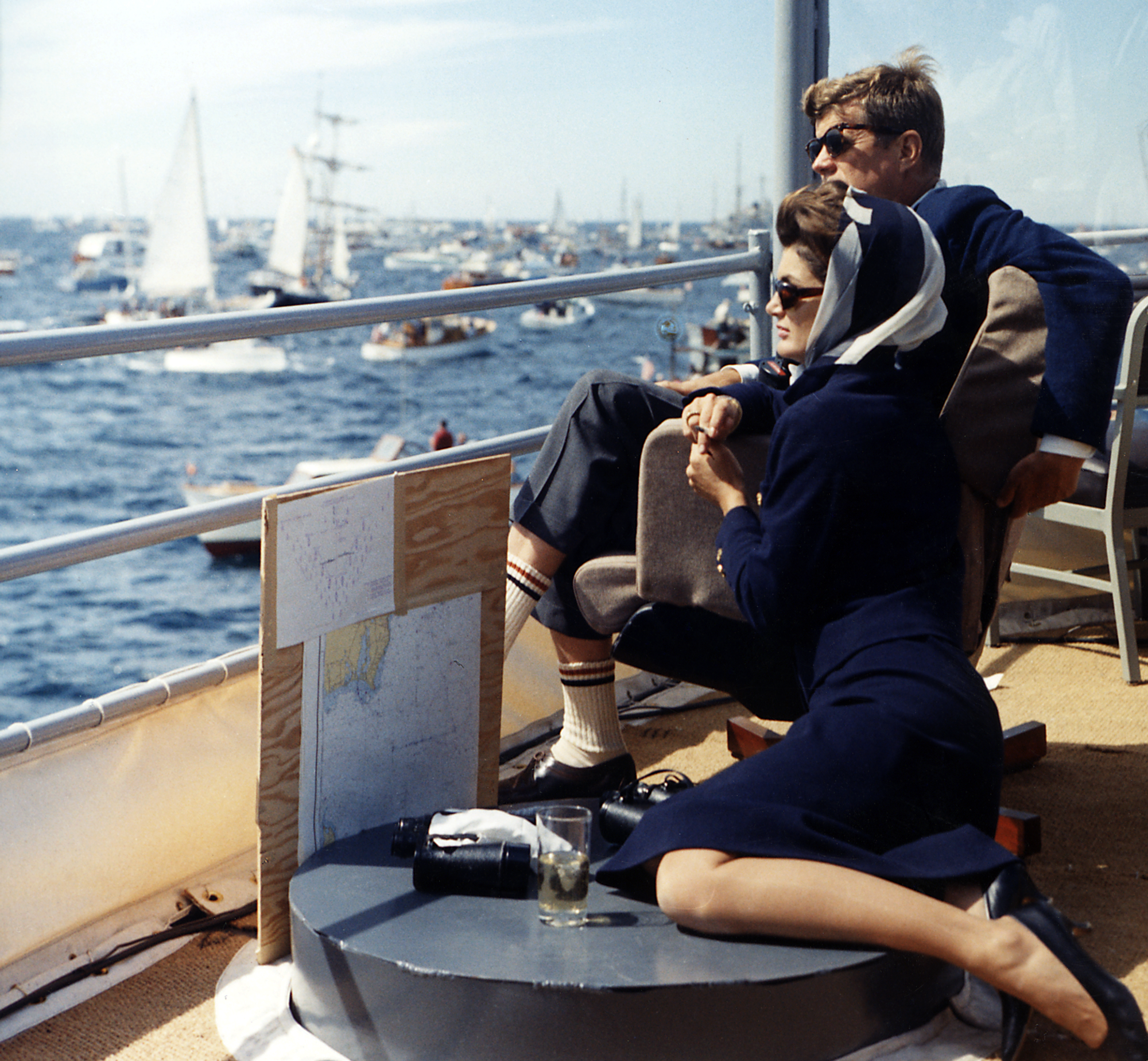
Day one of the 1962 Match was held on Saturday September 15th, 1962, with President Kennedy and Jackie Kennedy Onassis watching on from a US Navy Destroyer and a large spectator fleet that had to be cleared from the racecourse by the US Coastguard before racing could begin. The delay of over an hour raised tensions aboard both boats and in the final approach to the start-line, it was Mosbacher who held the upper hand forcing the Australians over the line before the gun.
Jock Sturrock was able to just about dial Gretel away and duck under at the pin end of the line to start on starboard tack, but the Australians were rattled, whilst Weatherly peeled away to the committee boat end to start on port tack at full speed. As they came back together a quarter of the way up the first beat, it was Weatherly that held a small advantage in the 10 knot west-north-westerly. As the two boats came together in the final third of the beat, the Americans tacked under Gretel’s lee bow and as a temporary windshift bent the two towards the mark, it was Mosbacher who had control, forcing the Australians off to clear their air and, by the top mark, stole a lead of over a minute and a half.
With the wind freshening to 18 knots on the first run, Gretel was able to benefit and cut the deficit by some 23 seconds but once Weatherly had turned into the wind, it was one-way traffic. The Americans extended on the next two legs to come across the finish line a resounding 3 minutes 46 seconds ahead. Sturrock called for an immediate lay-day as the Australians sought to decipher where their deficiencies lay. For the Americans, and in particular the astute Mosbacher, they knew that the Australian design was potent downwind and when sailed correctly, had real hull-speed upwind. What they couldn’t factor into the equation was the negative effect that Sir Frank Packer was having on the team and the Australian afterguard – some of whom were sailing in new roles such as Archie Robertson being installed in the unfamiliar position of navigator.
Race day two of the America’s Cup Match of 1962 was held on the 18th September on short, sharp seas and white caps whipped up on a lively 20 knot breeze. The course was triangular, and the conditions certainly looked to favour the Australian crew who were largely drawn from the emerging Sydney Harbour 19 foot skiff scene but it was Weatherly that held an early advantage on the first beat through clever positioning by Mosbacher. With the top mark approaching, the Gretel afterguard threw everything at Weatherly, initiating an 11-tack tacking duel and with superior grinding power courtesy of the inter-linked grinding pedastals driving the winch drums, the Australians rounded just 12 seconds adrift and very much in the race.
The reach down to the gybe mark was uneventful with Weatherly eking out a further two seconds but the action was all about to happen and one of the ‘moments of the Cup’ about to unfold.
As both boats gybed around the wing mark, almost in unison, it was Gretel that was first to launch their all-white spinnaker with it filling before it had reached full height. Weatherly was slower to launch, their genoa blanketing the spinnaker as the crew struggled in the conditions. Then, amidst a plume of foamy spray, Gretel caught what was perhaps a rogue wave set from the spectator fleet that lifted her stern at the perfect angle and catapulted her through to windward with the Australian crew hollering and yelling at the sheer excitement of passing the Americans clean.

Gretel surfs through to windward of Weatherly in the 1962 America’s Cup - Maritime Productions Collection © Paul Darling Photography Maritime Productions
Once through, Weatherly tried to come back by angling up towards the stern of Gretel and in doing so, with the spinnaker pole forward, snapped the spar around the headstay. There was little the Americans could do other than to keep the gap from being an embarrassment and as the challenger came to the finish line it was a slender victory margin of some 47 seconds. It was also the first time a challenging boat had won a race in the America’s Cup since Endeavour won the first two races against Rainbow in 1934. Mosbacher was nonchalant when asked about whether the team were disheartened by the defeat saying afterwards: “No, we have been beaten before…”
Spirits were high in the Australian camp, buoyed by such a dramatic victory and accepting plaudits from all around the world for how they had displayed such remarkable sail and boat handling in the big conditions. Jock Sturrock had called a lay-day wanting to thoroughly check the boat over whilst also implementing new hardware onboard. In hindsight it may have been a poor decision as the wind abated throughout the day on Wednesday 19th September 1962 and by the time the boats met on the 20th September, it was traditional Newport summer weather filtering down unsteadily from the north-east.
Gretel made the best of the start but within six minutes, Mosbacher had driven under the lee of Gretel who was attempting a close cover, forcing the Australians to tack away and despite a tense tacking duel towards the end of the first beat that resulted in both boats overstanding the top mark, it was the Americans who rounded with an advantage of just under a minute. From there, it was one-way traffic again, and with the wind dropping off considerably to under 10 knots after an early period of close reaching on this triangular course, where Weatherly was able to stay in more breeze for longer, at the America’s Cup buoy she held an astonishing advantage of some 23 minutes and 17 seconds.
The final port tack close fetch to the finish line was slightly agonising for the Americans though as the breeze began to fill in behind, allowing Gretel to cut the deficit in half but by the finish it was still a resounding 8 minutes and 40 second victory to Weatherly and 2-1 in the series. The deflation the Australians felt was palpable and Jock Sturrock called for yet another lay-day, determined to try and regain momentum.
Newport was buzzing with weekenders determined to catch a glimpse of the racing and Saturday September 22nd, 1962, saw a huge spectator fleet out on the racecourse that were treated to a Mosbacher masterclass in tactical prowess. After an aggressive start, the Americans held the lead with very little to choose between the two boats. Weatherly was in its usual high-mode whilst the Australians were beginning to feel more comfortable slightly footed. What changed everything was a call from the Gretel afterguard to change genoas, opting for a flat cut ‘overlapper’ with the draft well aft, and not only did the change drop them back but the sail underperformed. Weatherly rounded the top mark 1 minute and 26 seconds up – quite a margin in the light conditions.
The tight reach to the spreader mark certainly favoured Gretel and by the buoy she had closed the gap to just under a minute and it was on the next leg where Mosbacher, perhaps feeling that the writing was on the wall in the face of the relentless Australian downwind performance, pulled a masterstroke that had all the hallmarks of Sherman Hoyt and Zenas Bliss’s cute tactics when guiding Rainbow to victory against Endeavour in two races in 1934.
Then, the Hoyt/Bliss genius was to set Rainbow on a course that suited the downwind characteristics of the boat but far away from the actual course to the line and then relied on the English racing spirit to follow suit in an attempt to cover. Here in 1962, on a final reach to the finish, Mosbacher did the same dropping his spinnaker and launching a genoa whilst heading far above the course for the finish line. The Australians were spooked and quickly followed suit but as they did, some expert foredeck work on Weatherly, saw the spinnaker re-launched and set, the genoa dropped to the deck and a large bear-away back on course for the finish line. Panic ensued on the Australian boat and the attempt to re-launch the spinnaker was slow. In just eight knots of wind, Mosbacher brought Weatherly across the finish line 26 seconds ahead with the Australians, and their three-time Olympian helmsman Jock Sturrock, ruing their decision to get suckered into the drop. 3-1 to the Americans and Match point.
As was now customary with the Challenger, Sturrock called a further lay-day, determined still to find the speed to match Mosbacher. Much attention was paid to the rig and sails with some notable speed increases noted for the higher wind range. If the breeze came, Gretel found that by grinding on the backstay aggressively and bending the aluminium mast far more than they had done previously, gave the Australian boat increased point and balance. It was certainly worth a try if the expected afternoon breezes arrived.
A 10-16 knot breeze greeted the two yachts for what was to be the deciding race in 1962 over the traditional 24 mile windward / leeward course and again the American afterguard’s tactical nous came to the fore much to the delight of the Newport spectators. After a solid start where Mosbacher controlled the pre-start circling, Gretel was forced over the line a fraction early whilst the Americans could hold a powerful position out on a long starboard tack from the pin end. As the boats came back together, Sturrock’s only option was to try and force a tacking duel, a bête noir of the Americans so far in the series, but one that Mosbacher and his crew had worked hard to eradicate.
What the Americans had noticed was that although Gretel was faster through the tack, she was slower to get up to speed post tack. This called for the tactic of ignoring the down-speed close cover once ahead so often used in match-racing in favour of Weatherly getting fully up to speed before coming back on the cover tack. Weatherly therefore could travel through the water better whilst Gretel was getting up to speed, and being forced to initiate the duel whilst losing ground. Winch problems also were the undoing of the Australians in the race and by the top mark, Mosbacher had established a lead of over two minutes.
The run down to the leeward mark was uneventful other than the wind increasing and the Americans stretching out to a 2 minute 20 second lead. Sturrock was in last chance saloon and instructed the crew to replicate the flattened off mainsail that had worked so well on the lay-day. The mast was cranked back by the coffee grinders and Gretel came alive, cutting the deficit of 600 yards to just 400 yards in half a mile. With the wind freeing into the finish but detected earlier and more pronounced ahead on Weatherly (being the leading boat), again Mosbacher and George O’Day, Weatherly’s tactician, threw a move that dumfounded everyone watching. They tacked.
Gretel’s afterguard, having no way of knowing the size of the shift ahead, followed suit and with the trimmers unable to replicate the trim and the mast setting, by the time both boats came back onto the course for the finish line they were fetching with Gretel way over-stood. Another masterstroke from Mosbacher who cleverly recognised what was happening boatspeed-wise behind, had a first-rate tactician who knew exactly what the cyclical breeze from the southwest would do, and the sheer brilliance to upset the rhythm of the Challenger just at the right moment. Crossing the line with a solid 3 minutes and 40 second victory, the Cup was assuredly defended on behalf of the New York Yacht Club.
America won the America’s Cup as much as Australia lost it in 1962 and the flag of the tournament – the ‘N’ flag which indicated that the other boat wished to call a lay-day and didn’t wish to sail tomorrow – was duly and rather ironically hoisted by the Australians in recognition of a defence that was as unlikely as it was brilliant. The faster boat perhaps didn’t win but the Australians would be back and more determined than ever to lift the Auld Mug.
- Private Charters: (401) 849-5868
- Ticketed Sails: (401) 846-9886
l2 US l7 Weatherly
1962 america's cup winner.
Year Built: 1958 Yacht Designer: Philip Rhodes Yacht Builder: Luders Marine Construction, Stamford CT Syndicate: Henry Mercer, New York Yacht Club
The acclaimed yacht designer Philip Rhodes, designed only one 12 Meter in his career, the Cup winner Weatherly ! She is stunning to see under sail, with long overhangs and the finely tapered ends of a classic. Beautifully appointed below decks, she glistens with raised mahogany paneling, tufted leather seating, and the warm glow of varnished wood. One of only three surviving wooden America’s Cup Defenders in the world, Weatherly is a true legend in American sailing history. Built by Luders Marine Shipyard to the highest construction standards, of African Mahogany, White Oak and durable bronze, her longevity is a testament to the boat builder’s art.
She got off to a late start in the 1958 America’s Cup trials off Newport where she was eliminated in the highly competitive defender series that year. In 1962 she was modified by A.E. “Bill” Luders and skippered by the master 12 Meter helmsman, Emil “Bus” Mosbacher. Skipper and crew fought hard all summer to defeat rival Nefertiti in the defender’s trials, before going on to sail against Gretel , the first Australian challenger for the America’s Cup. The ’62 America’s Cup defense was one of the most closely battled series in history. Weatherly , probably no faster than the speedy challenger from down under, ultimately prevailed, keeping The America’s Cup in Newport, RI. The races were followed closely by President and Mrs. Kennedy, who brought their sense of style to the Newport social scene.
Weatherly continued to compete in America’s Cup competition through 1970, when she was converted for offshore racing on the Great Lakes, the SORC, and later, Puget Sound. She was purchased at Seattle, WA in 1986 by America’s Cup Charters’ founder George Hill, who then sailed her to Newport via the Panama Canal. Weatherly has been meticulously restored in what can only be described as a labor of love, each year seeing hull, rigging and hardware improvements that will extend her life for years to come. Weatherly offers a comfortable varnished interior, speed and beauty under sail, and one of the finest pedigrees in yachting. Enjoy a day with America’s Cup Charters and sail aboard the extraordinary America’s Cup Winner Weatherly !
Have questions?
©2022 America’s Cup Charters. All Rights Reserved.

First refuelling for Russia’s Akademik Lomonosov floating NPP
!{Model.Description}
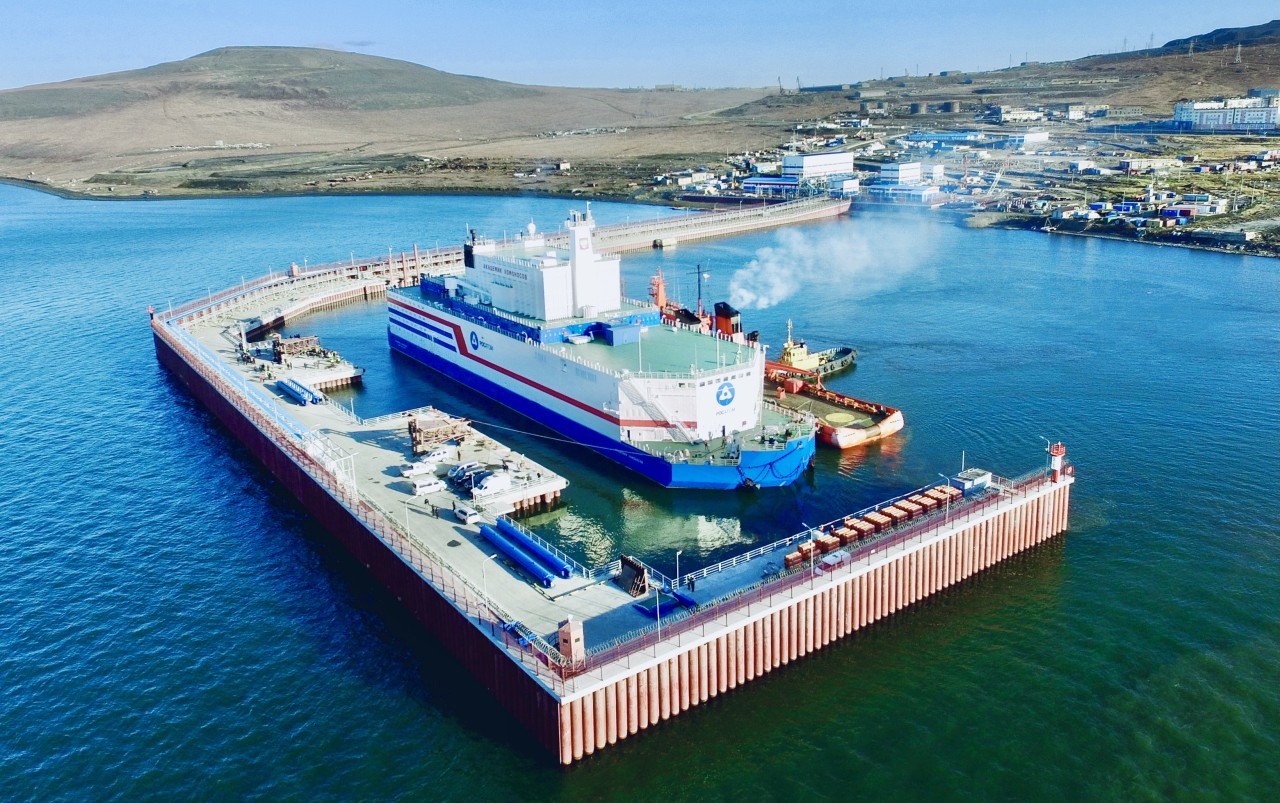
The FNPP includes two KLT-40S reactor units. In such reactors, nuclear fuel is not replaced in the same way as in standard NPPs – partial replacement of fuel once every 12-18 months. Instead, once every few years the entire reactor core is replaced with and a full load of fresh fuel.
The KLT-40S reactor cores have a number of advantages compared with standard NPPs. For the first time, a cassette core was used, which made it possible to increase the fuel cycle to 3-3.5 years before refuelling, and also reduce by one and a half times the fuel component in the cost of the electricity produced. The operating experience of the FNPP provided the basis for the design of the new series of nuclear icebreaker reactors (series 22220). Currently, three such icebreakers have been launched.
The Akademik Lomonosov was connected to the power grid in December 2019, and put into commercial operation in May 2020.
Electricity generation from the FNPP at the end of 2023 amounted to 194 GWh. The population of Pevek is just over 4,000 people. However, the plant can potentially provide electricity to a city with a population of up to 100,000. The FNPP solved two problems. Firstly, it replaced the retiring capacities of the Bilibino Nuclear Power Plant, which has been operating since 1974, as well as the Chaunskaya Thermal Power Plant, which is more than 70 years old. It also supplies power to the main mining enterprises located in western Chukotka. In September, a 490 km 110 kilovolt power transmission line was put into operation connecting Pevek and Bilibino.
Image courtesy of TVEL
- Terms and conditions
- Privacy Policy
- Newsletter sign up
- Digital Edition
- Editorial Standards

- Today's news
- Reviews and deals
- Climate change
- 2024 election
- Fall allergies
- Health news
- Mental health
- Sexual health
- Family health
- So mini ways
- Unapologetically
- Buying guides

Entertainment
- How to Watch
- My watchlist
- Stock market
- Biden economy
- Personal finance
- Stocks: most active
- Stocks: gainers
- Stocks: losers
- Trending tickers
- World indices
- US Treasury bonds
- Top mutual funds
- Highest open interest
- Highest implied volatility
- Currency converter
- Basic materials
- Communication services
- Consumer cyclical
- Consumer defensive
- Financial services
- Industrials
- Real estate
- Mutual funds
- Credit cards
- Credit card rates
- Balance transfer credit cards
- Business credit cards
- Cash back credit cards
- Rewards credit cards
- Travel credit cards
- Checking accounts
- Online checking accounts
- High-yield savings accounts
- Money market accounts
- Personal loans
- Student loans
- Car insurance
- Home buying
- Options pit
- Investment ideas
- Research reports
- Fantasy football
- Pro Pick 'Em
- College Pick 'Em
- Fantasy baseball
- Fantasy hockey
- Fantasy basketball
- Download the app
- Daily fantasy
- Scores and schedules
- GameChannel
- World Baseball Classic
- Premier League
- CONCACAF League
- Champions League
- Motorsports
- Horse racing
- Newsletters
New on Yahoo
- Privacy Dashboard
15 men brought to military enlistment office after mass brawl in Moscow Oblast
Local security forces brought 15 men to a military enlistment office after a mass brawl at a warehouse of the Russian Wildberries company in Elektrostal, Moscow Oblast on Feb. 8, Russian Telegram channel Shot reported .
29 people were also taken to police stations. Among the arrested were citizens of Kyrgyzstan.
A mass brawl involving over 100 employees and security personnel broke out at the Wildberries warehouse in Elektrostal on Dec. 8.
Read also: Moscow recruits ‘construction brigades’ from Russian students, Ukraine says
We’re bringing the voice of Ukraine to the world. Support us with a one-time donation, or become a Patron !
Read the original article on The New Voice of Ukraine
Recommended Stories
Nfl free agency good, bad and ugly: how has your favorite team done so far.
Which teams should be most excited after a week of NFL free agency?
Pass or Fail: Houston Texans show off new road uniforms after Reddit leak
Texans CEO and Chairman Cal McNair took to Reddit to show off one of the team's new uniform combinations in response to a leak.
Timberwolves star Anthony Edwards throws down ridiculous dunk of the year over John Collins in win vs. Jazz
John Collins got put on a wild poster on Monday night, and had to leave the game due to a head injury.
A 15-year problem that has plagued corporate America is finally turning around
Productivity is rebounding after 15 years of no gains. That could help drive stocks higher.
Shohei Ohtani posts first photo with wife ahead of Dodgers' trip to South Korea
Ohtani's wife is former Japanese basketball player Mamiko Tanaka.
Baker Mayfield gets called 'a 10 on the pr--- scale' by Bucs GM, then thanks him: 'I'll take that'
Baker took it as a compliment, even though it didn't really sound like one.
2024 Fantasy Baseball: Jackson Holliday leads 5 key draft sleepers from the infield
Dalton Del Don examines potential draft values with the upside to make a difference in fantasy baseball leagues.
Fed's inflation fight will affect housing supply for decades, says Redfin CEO
The housing market is showing signs of a recovery, but Redfin CEO Glenn Kelman warns higher rates will affect the housing sector for decades.
Russell Wilson's hurried deal with Steelers may say a lot about his intentions, and Pittsburgh's
Wilson's announced deal with Pittsburgh went down before free agency even began. Why were both sides so quick to link up?
LB Leighton Vander Esch medically retires at age 28; Jerry Jones 'proud' he played for Cowboys
Recurrent neck issues have ended Leighton Vander Esch's career after just six seasons.
Kyrie Irving hits wild left-handed floater at the buzzer to lift Mavericks past Nuggets
Kyrie Irving lifted the Mavericks to a huge 107-105 win over the Nuggets on Sunday afternoon.
NFL free agency: Moves that caught our attention so far, from the Patriots (good) to some running backs (odd)
Yahoo Sports' Nate Tice breaks down the moves that stuck out to him now that the initial dust has settled on Tamperpalooza.
Another Cybertruck is at auction, bids past $150K with four days to go
The Tesla Cybertruck roller-coaster pricing ride continues this week, with its inaugural appearance on the “Cars & Bids” auction site: a loaded 2024 AWD Foundation Series, with a stainless steel exterior and a black interior.
The biggest gas-guzzlers of 2024: 'The Meanest List' is the opposite of greenest cars
In its so-called “Meanest List” of a dozen models, the American Council for an Energy-Efficient Economy (ACEEE) makes no apologies for berating “the worst-performing mass market automobiles” sold in 2024 in the U.S.
Shell just showed why Big Oil is reluctant to give up on fossil fuels
Shell cut its carbon emissions goals this week, underscoring Big Oil's commitment to fossil fuels.
GM issues stop-sale order for 2024 Chevy Colorado, GMC Canyon pickups
General Motors has issued a stop-sale order on the Chevy Colorado and GMC Canyon to address crippling software problems.
Raptors F R.J. Barrett's younger brother Nathan dies
Barrett will miss Friday's game against the Magic.
Kirk Cousins’ Falcons deal will ripple across NFL, from Justin Fields to Jared Goff and the draft
The Bears' trade market for Fields got even frostier as the Falcons bowed out of being a potential suitor.
Why are middle-aged Americans so lonely — and what habits can we learn from Europeans?
Americans are highly individualistic, which experts say may contribute to our feelings of loneliness.
QB Jimmy Garoppolo agrees to terms on 1-year deal with Rams, per report
Garoppolo is headed from Las Vegas to Los Angeles.

IMAGES
VIDEO
COMMENTS
Gretel II. Gretel II (KA-3) is an International 12-metre class racing yacht built for the America's Cup challenge series in 1970. She was designed by Alan Payne and built by W.H. Barnett for Australian media tycoon Sir Frank Packer . Packer had first challenged for the America's Cup in 1962 with the yacht Gretel, which was named after his wife.
The 1962 America's Cup was held just a month before the Cuban missile crisis at Newport, Rhode Island. The Australian challenger yacht Gretel went up against the yacht from the New York Yacht Club, the Weatherly.Gretel was the first Australian challenger, the first America's Cup challenger from a country other than Britain or Canada, and the first from the southern hemisphere.
1970 America's Cup Ficker INTREPID vs Hardy GRETEL II. Furthermore, the NYYC, so long the iron-fisted holder of the Cup and writer of the rules, adopted a stance via a memorandum on January 19 th 1970 that many commentators believe signed the America's Cup to an inevitable destination - away from the New York Yacht Club. The memorandum clarified the protocol going forward and paved the way ...
The 12mR yacht "Gretel" sailed as a challenger for the America's Cup in 1962 and was the first Australian 12-metre ever, designed by Alan Payne. The boat was far quicker than the defending "Weatherly" designed by Philip Rhodes, and indeed won, the first challenger after the race between "Endeavour" and "Rainbow" at an AC competition in 1934 ...
Gretel is an Australian racing yacht in the 12-metre class that unsuccessfully challenged for the 1962 America's Cup. Gretel lost to Weatherly by 1-4. References This page was last edited on 19 November 2022, at 22:40 (UTC). Text is available under the Creative Commons ...
Spotted on the courtyard of Robbe & Berking Classics; Gretel, a piece of America's Cup history. This legendary 12-metre yacht has had a long journey so far, from Australia via the United States and Italy to Flensburg. In 1962 she was the boat of the Australian challenger, Sir Frank Packer, but she was sailed by Jock Sturrock and was the ...
In 2010 GRETEL II takes part in races on the Harbour and is planning to sail to events outside of NSW in the coming year. Significance GRETEL II is the Australian America's Cup 12 metre class yacht built to challenge for the America's Cup series in 1970. It lost the series to the American defender INTREPID 4-1 in controversial circumstances ...
At the 1962 America's Cup, an Australian yacht, 'Gretel', was entered for the first time. Looking on from their own yacht are President Kennedy and his wife - and most notable are the First Lady's sensational 60s sunglasses…
1851. On August 22, the New York Yacht Club's schooner America wins a 53-mile race around England's Isle of Wight organized by the Royal Yacht Squadron. It is awarded a "100 Guinea Cup" or "Queen's Cup," as it was variously known. Later the trophy comes to be known as the "America's Cup," in honor of the schooner that won it.
The America's Cup Hall of Fame honors individuals who have made outstanding contributions to yachting's most distinguished competition. ... Gretel: Australia: Weatherly ... The yacht AMERICA won the Royal Yacht Squadron ₤100 Cup on August 22nd, 1851. Her surviving owners presented the Cup to the New York Yacht Club in 1857 under the condition ...
NEWPORT, R. I., Sept. 25--The United States retained the America's Cup today. In the fifth race of the 18th defense, Weatherly defeated Gretel of Australia by half a mile.
Nevins Yacht Yard Briggs Cunningham: Columbia New York Yacht Club United States: 3-1 Sceptre Royal Yacht Squadron England: Hugh Goodson David Boyd Alexander Robertson & Sons Graham Mann 18 1962 Newport: Henry D. Mercer Phillip L. Rhodes Luders Marine Constr. Co Emil B. Mosbacher Weatherly New York Yacht Club United States: 4-1 Gretel Royal ...
The first and only complete set of fine art illustrations of all the yachts that have sailed for the America's Cup America's Cup Museum (1983) A History of the America's Cup Present the ... Gretel 1962 Individual Boat Prints 1851-2003..... Gretel (1962) ROYAL SYDNEY YACHT SQUADRON Designer - A.Payne L.O.A. - 69'5" L.W.L. - 45'0" Beam - 11'9 ...
The 12-m-R yacht GRETEL sailed as a challenger for the America's Cup in 1962. It was the first ever Australian 12mR. GRETEL was designed by the yacht designer Alan Payne. Her hull was built of wood on steel frames. ... In 1975 the "Southern Cross America's Cup Challenge Association, Ltd." owned the yacht, from 1976 to 1979 it belonged ...
For what was to be the final race of the America's Cup Match in 1967, dense fog greeted the two yachts on Monday 18th September and for all the world it looked like a postponement would be called. However, at 2.10pm and only a few minutes before the time limit expended, the NYYC Race Committee saw a clearing and got racing underway.
The 1958 America's Cup took the wind out of Britain's sails in the competition. So comprehensive was the defeat of Sceptre by Columbia, and so wide reaching were the ramifications with regards design decisions and the resultant internal politics at the Royal Yacht Squadron, that participation going forward was in serious doubt. Concerted momentum had been lost in Britain but down under, in ...
The acclaimed yacht designer Philip Rhodes, ... before going on to sail against Gretel, ... The '62 America's Cup defense was one of the most closely battled series in history. Weatherly, probably no faster than the speedy challenger from down under, ultimately prevailed, keeping The America's Cup in Newport, RI. The races were followed ...
The America's Cup is a sailing competition and the oldest international competition still operating in any sport. America's Cup match races are held between two sailing yachts: one from the yacht club that currently holds the trophy (known as the defender) and the other from the yacht club that is challenging for the cup (the challenger). The winner is awarded the America's Cup trophy ...
Rosatom's fuel company TVEL has supplied nuclear fuel for reactor 1 of the world's only floating NPP (FNPP), the Akademik Lomonosov, moored at the city of Pevek, in Russia's Chukotka Autonomous Okrug. The supply of fuel was transported along the Northern Sea Route. The first ever refuelling of the FNPP is planned to begin before the end of ...
The New Voice of Ukraine. Local security forces brought 15 men to a military enlistment office after a mass brawl at a warehouse of the Russian Wildberries company in Elektrostal, Moscow Oblast on Feb. 8, Russian Telegram channel Shot reported. 29 people were also taken to police stations. Among the arrested were citizens of Kyrgyzstan.
Ukrainian military had 64 combat engagements with Russian forces near Synkivka of Kharkiv region, south to Terny and Vesele of Donetsk region, Klischiyivka and Andriyivka of Donetsk region, near Novobakhmutivka, Avdiyivka, Syeverne, Pervomayske and Nevelske of Donetsk region, Heorhiyivka, Pobyeda and Novomykhaylivka of Donetsk region, Staromayorske of Donetsk region, at the east bank of Dnipro ...
The 1962 America's Cup, the second to be sailed in 12-metre yachts, marked the first challenge for the Cup from a country other than Great Britain or Canada, and was the first challenge from a country in the southern hemisphere. An Australian syndicate headed by Sir Frank Packer, representing the Royal Sydney Yacht Squadron, challenged with ...
Get directions to Yuzhny prospekt, 6к1 and view details like the building's postal code, description, photos, and reviews on each business in the building